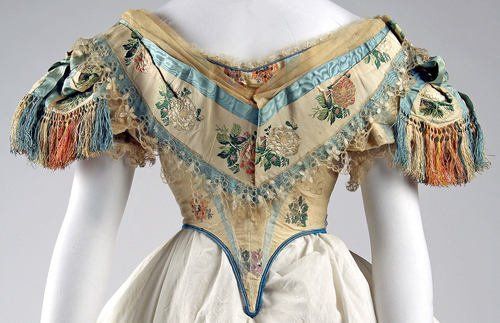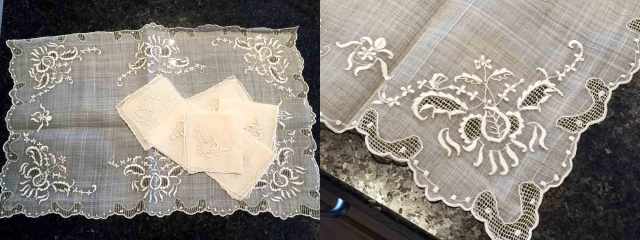I had originally planned on making this a two-piece dress with a separate blouse and skirt, but then realized that my fabric was so sheer that it would clearly show the tucked-in blouse through the skirt, making the whole thing look weird. I decided instead to turn it into a dress and add a closure to the side front. The layered design of the skirt would help with this, since it would disguise the closure once it went past the bodice.
I started with Truly Victorian’s TVE45, the 1911 Narrow Panel Blouse, cutting out a mockup just to see how it would fit. To my surprise, it did not go well.

The pattern is so basic– two T-shaped side panels connected by a front and back– that I’d assumed it would go together easily and without much trouble. Well, it went together easily, but the fit was all off. The front panel was far too low on the chest, and the kimono sleeves pulled the already slightly-angled neckline even more towards the sides of the shoulders, causing unsightly pulling across the bust and skewing the neck opening. The sleeves were also too baggy, which is probably a matter of preferences vs. a flaw in the pattern, but which still had to be adjusted.
I endeavored to fix things first by altering the shape of the front and back panels to be wider and less angled. I like the angled look in general, but here it was not only causing the above-mentioned fit issues, but also reducing the amount of visible space available for my lace bodice insert, which I’d intended to show off. Making the panels wider gave me more space, and making the sides straighter kept the neckline stable. I also raised both panels up several inches– the front for modesty’s sake and the back to keep the neckline where it belonged.
Continue reading →























